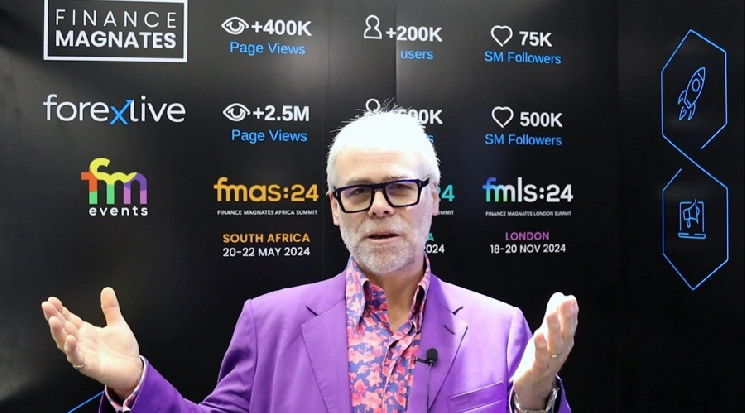“Crypto Liquidity and FX Liquidity Are Sort of Coming Together”: CEO of Gold-i
 financemagnates.com 22 July 2024 08:49, UTC
financemagnates.com 22 July 2024 08:49, UTC “Crypto liquidity and FX liquidity are sort of coming together,” Tom Higgins, founder and CEO of Gold-i, pointed out to Finance Magnates at iFX EXPO International 2024. “When you’ve got a traditional retail FX broker, and they want to access crypto liquidity, how do they make that happen? It’s different liquidity providers; it’s different ways of accessing it. The technology is similar, but you need different angles on it.”
Headquartered in the United Kingdom, Gold-i offers brokers technology for accessing liquidity. Although the company does not provide liquidity, it connects trading platforms to multiple liquidity providers.
“The ETF Changed Everything”
“Bitcoin and Ethereum are where the vast amount of liquidity is,” he said, highlighting the scene of crypto liquidity, adding: “where altcoins have very little. So, you have to be able to get the right sources of liquidity if you want to trade them. They’re like penny stocks, so you can do well or lose some of them, obviously, but they are much, much more volatile if you like volatility.”
In recent years, the demand for crypto liquidity has skyrocketed. Events like the spot Bitcoin exchange-traded fund (ETF) in the US and political endorsement of cryptocurrencies have also increased demand.
“The ETF changed everything because it puts a stamp of authority from the institutional side of the business into crypto assets,” Higgins said. “It allowed the traditional players who don’t have licenses or regulations to play in Bitcoin without actually playing in Bitcoin. When they buy a fund priced on Bitcoin, they’re not buying crypto; they don’t need regulation, and they’re buying a standard traditional finance fund.”
“But if they’ve got a fund priced against Bitcoin, somebody needs to hold all that Bitcoin to back it up. So, there was an awful lot of buying of Bitcoin, meaning there were a lot of inflows buying Bitcoin, outflows from exchanges to the funds, inflows into exchanges to the funds buying them. That resulted in a big price surge because of the pressure as there was a lack of supply.”
$BTC #ETF Net Inflow July 8, 2024: +$295M!
• This is the highest net inflow by the 10 US Bitcoin ETFs in the past 21 trading days, which came despite the $1B worth of $BTC outflows from the German government.
• No US Bitcoin ETF, not even #Grayscale, saw an outflow… pic.twitter.com/kzJglkSShG
— Spot On Chain (@spotonchain) July 9, 2024
“Everything Has Its Place in the Market”
While the crypto demand is increasing, many new players are also entering the market, including the crypto electronic communication networks (ECNs). Although ECNs are very popular in forex trading, they are new in the crypto space.
“There are lots of different ways of accessing that liquidity,” Higgins added, “and the ECNs are providing a nice way of doing anonymised aggregation, so nobody knows who either side is at the trade, which is good and bad. The downside is that because the provider doesn’t know who you are, they will generally have to provide a slightly wider spread. They’ve got a risk that they are not certain about.”
“Everything has its place in the market: undisclosed ECNs, disclosed ECNs, aggregated feeds, direct feeds and so on.”
“AI Will Confidently Give You the Wrong Answer”
At iFX EXPO, Higgins participated in a panel discussion, during which he discussed the implications of artificial intelligence (AI) and machine learning in the financial services space, especially trading.
“There’s a lot of misuse of the term,” Higgins said on AI and more particularly ChatGPT. “It’s more about using news and being able to understand the sentiment to guide where you’re going to be trading rather than generating straight buy and sell signals, which is too complicated for AI. You’ll get too much incorrect information because one of the problems with generative AI models is that they will confidently give you the wrong answer.”
“Our point of view is the other side,” he said. “If all the traders have got wonderful bots using AI to tell them when to buy and sell, and you as a book broker or hybrid broker haven’t got anything to protect you against that, suddenly you could be losing a lot of money. You need the ability to be able to use AI on your side to be able to analyse the trading patterns of these traders to see when some news is gonna come in and be able to react and maybe widen your spreads, reject orders, or slip prices if they are hitting too hard. You need to be able to react to the trading API.”




